1. Overview
The Kangxi Emperor (4 May 1654 - 20 December 1722), personal name Xuanye, was the fourth emperor of the Qing dynasty and the second Qing emperor to rule over China proper. His reign, which lasted 61 years, makes him the longest-reigning emperor in Chinese history and one of the longest-reigning rulers globally. Widely regarded as one of China's greatest emperors, his era name, Kangxi (康熙KāngxīChinese), means "peaceful harmony," reflecting his efforts to bring stability and prosperity after years of conflict. His rule initiated the period known as the High Qing era, also called the "Prosperous Era of Kangxi and Qianlong," a golden age that spanned his reign, that of his son Yongzheng, and his grandson Qianlong. He successfully consolidated the Qing Empire, suppressed major rebellions, expanded its territories, and fostered a significant cultural and academic revival. The Kangxi Emperor's Manchu name was Elhe Taifin Hūwangdi (ᡝᠯᡥᡝ ᡨᠠᡳ᠌ᡶᡳᠨ ᡥᡡᠸᠠᠩᡩᡳ), and his Mongolian name was Enh Amgalan Khaan (Энх амгалан хаанEnh Amgalan KhaanMongolian).
2. Early life and background
The Kangxi Emperor's early life was marked by his birth into the imperial family and the subsequent regency that governed the empire during his youth.
2.1. Birth and childhood
The Kangxi Emperor was born Xuanye on 4 May 1654, in the Jingren Palace within the Forbidden City in Beijing. He was the third son of the Shunzhi Emperor and Empress Xiaokangzhang. His Manchu transliteration was hiowan yei. He was enthroned on 7 February 1661, at the age of seven (or eight by East Asian age reckoning). His era name, "Kangxi," officially began on 18 February 1662, the first day of the following lunar year. Contemporary sources describe the young Kangxi Emperor as "fairly tall and well proportioned," fond of "manly exercises," and with "large bright eyes" on a face "pitted with smallpox."
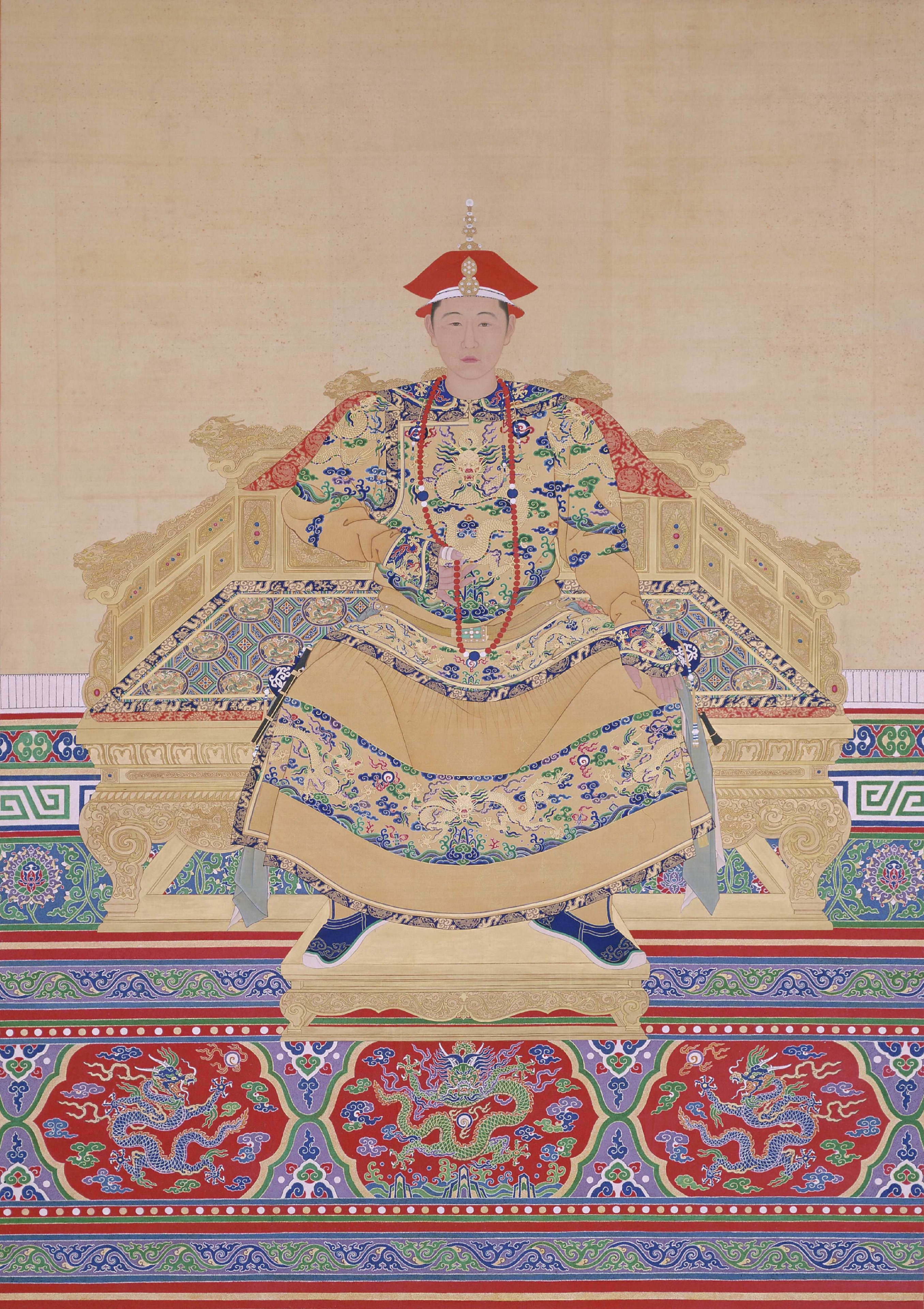
2.2. Education and regency
Before the Kangxi Emperor's accession, the Shunzhi Emperor had appointed four powerful men as regents: Sonin, Suksaha, Ebilun, and Oboi. Among these, Sonin died after his granddaughter became Empress Xiaochengren, leading to a power struggle between Suksaha and Oboi. Oboi eventually had Suksaha executed and seized absolute power as the sole regent. The Kangxi Emperor and the imperial court initially acquiesced to Oboi's dominance.
In the spring of 1662, the regents implemented the Great Clearance in southern China, forcibly evacuating the entire coastal population. This drastic measure aimed to counter the resistance movement led by Ming loyalists, particularly Zheng Chenggong, also known as Koxinga, who was based in Taiwan.
3. Accession and personal rule
Kangxi's assumption of personal rule marked a pivotal moment, as he quickly moved to assert his authority over the powerful regents.
3.1. Overthrow of regents
By 1669, the Kangxi Emperor, with the crucial assistance of his grandmother, Grand Empress Dowager Zhaosheng, who had raised him, orchestrated the arrest of Oboi. This decisive action allowed the young emperor to assume personal control of the empire. Following this, he identified three pressing issues requiring his immediate attention: flood control of the Yellow River, the repair and maintenance of the Grand Canal, and the suppression of the Revolt of the Three Feudatories in southern China. The Grand Empress Dowager continued to exert significant influence on him, and he personally cared for her in the months leading up to her death in 1688.
4. Reign and achievements
The Kangxi Emperor's 61-year reign was characterized by significant military, economic, and cultural achievements that solidified the Qing dynasty's rule and laid the foundation for a period of prosperity.
4.1. Chronology of the Kangxi Era
The Kangxi era spanned 61 years, from 1662 to 1722. The following table provides a chronological overview of the Kangxi era alongside the Western calendar and the Chinese sexagenary cycle.
| Kangxi | Year | Sexagenary cycle | ||||||||
| 1st year | 1662 | Ren-yin (壬寅) | ||||||||
| 2nd year | 1663 | Gui-mao (癸卯) | ||||||||
| 3rd year | 1664 | Jia-chen (甲辰) | ||||||||
| 4th year | 1665 | Yi-si (乙巳) | ||||||||
| 5th year | 1666 | Bing-wu (丙午) | ||||||||
| 6th year | 1667 | Ding-wei (丁未) | ||||||||
| 7th year | 1668 | Wu-shen (戊申) | ||||||||
| 8th year | 1669 | Ji-you (己酉) | ||||||||
| 9th year | 1670 | Geng-xu (庚戌) | ||||||||
| 10th year | 1671 | Xin-hai (辛亥) | ||||||||
| Kangxi | Year | Sexagenary cycle | ||||||||
| 11th year | 1672 | Ren-zi (壬子) | ||||||||
| 12th year | 1673 | Gui-chou (癸丑) | ||||||||
| 13th year | 1674 | Jia-yin (甲寅) | ||||||||
| 14th year | 1675 | Yi-mao (乙卯) | ||||||||
| 15th year | 1676 | Bing-chen (丙辰) | ||||||||
| 16th year | 1677 | Ding-si (丁巳) | ||||||||
| 17th year | 1678 | Wu-wu (戊午) | ||||||||
| 18th year | 1679 | Ji-wei (己未) | ||||||||
| 19th year | 1680 | Geng-shen (庚申) | ||||||||
| 20th year | 1681 | Xin-you (辛酉) | ||||||||
| Kangxi | Year | Sexagenary cycle | ||||||||
| 21st year | 1682 | Ren-xu (壬戌) | ||||||||
| 22nd year | 1683 | Gui-hai (癸亥) | ||||||||
| 23rd year | 1684 | Jia-zi (甲子) | ||||||||
| 24th year | 1685 | Yi-chou (乙丑) | ||||||||
| 25th year | 1686 | Bing-yin (丙寅) | ||||||||
| 26th year | 1687 | Ding-mao (丁卯) | ||||||||
| 27th year | 1688 | Wu-chen (戊辰) | ||||||||
| 28th year | 1689 | Ji-si (己巳) | ||||||||
| 29th year | 1690 | Geng-wu (庚午) | ||||||||
| 30th year | 1691 | Xin-wei (辛未) | ||||||||
| Kangxi | Year | Sexagenary cycle | ||||||||
| 31st year | 1692 | Ren-shen (壬申) | ||||||||
| 32nd year | 1693 | Gui-you (癸酉) | ||||||||
| 33rd year | 1694 | Jia-xu (甲戌) | ||||||||
| 34th year | 1695 | Yi-hai (乙亥) | ||||||||
| 35th year | 1696 | Bing-zi (丙子) | ||||||||
| 36th year | 1697 | Ding-chou (丁丑) | ||||||||
| 37th year | 1698 | Wu-yin (戊寅) | ||||||||
| 38th year | 1699 | Ji-mao (己卯) | ||||||||
| 39th year | 1700 | Geng-chen (庚辰) | ||||||||
| 40th year | 1701 | Xin-si (辛巳) | ||||||||
| Kangxi | Year | Sexagenary cycle | ||||||||
| 41st year | 1702 | Ren-wu (壬午) | ||||||||
| 42nd year | 1703 | Gui-wei (癸未) | ||||||||
| 43rd year | 1704 | Jia-shen (甲申) | ||||||||
| 44th year | 1705 | Yi-you (乙酉) | ||||||||
| 45th year | 1706 | Bing-xu (丙戌) | ||||||||
| 46th year | 1707 | Ding-hai (丁亥) | ||||||||
| 47th year | 1708 | Wu-zi (戊子) | ||||||||
| 48th year | 1709 | Ji-chou (己丑) | ||||||||
| 49th year | 1710 | Geng-yin (庚寅) | ||||||||
| 50th year | 1711 | Xin-mao (辛卯) | ||||||||
| Kangxi | Year | Sexagenary cycle | ||||||||
| 51st year | 1712 | Ren-chen (壬辰) | ||||||||
| 52nd year | 1713 | Gui-si (癸巳) | ||||||||
| 53rd year | 1714 | Jia-wu (甲午) | ||||||||
| 54th year | 1715 | Yi-wei (乙未) | ||||||||
| 55th year | 1716 | Bing-shen (丙申) | ||||||||
| 56th year | 1717 | Ding-you (丁酉) | ||||||||
| 57th year | 1718 | Wu-xu (戊戌) | ||||||||
| 58th year | 1719 | Ji-hai (己亥) | ||||||||
| 59th year | 1720 | Geng-zi (庚子) | ||||||||
| 60th year | 1721 | Xin-chou (辛丑) | ||||||||
| Kangxi | Year | |||||||||
| 61st year | 1722 | |||||||||
| Sexagenary cycle | Ren-yin (壬寅) | |||||||||
4.2. Consolidation of the Qing Empire
The emperor undertook crucial military and political actions to secure and unify the Qing dynasty's control over China, most notably suppressing major internal rebellions.
4.2.1. Revolt of the Three Feudatories
After the Qing conquest of China in 1644, large portions of the south and west were granted as fiefs to three former Ming generals who had aided the Qing. By 1673, these three feudatories were under the control of Wu Sangui, Geng Jingzhong, and Shang Zhixin. Against the advice of most of his counselors, the Kangxi Emperor attempted to compel these feudal princes to relinquish their lands and retire to Manchuria. This policy sparked a major rebellion, the Revolt of the Three Feudatories, which began in 1673 and lasted for eight years. Kangxi later reflected on his decision, blaming himself for the extensive loss of life during the conflict.
Wu Sangui's forces quickly overran much of southwest China, and he sought alliances with local generals such as Wang Fuchen. The Kangxi Emperor deployed generals like Zhou Peigong and Tuhai to quell the uprising. He also granted clemency to common people who had been caught up in the war. Although he intended to personally lead the armies, his subjects advised against it. The Kangxi Emperor primarily utilized Han Chinese Green Standard Army soldiers to suppress the rebels, while the Manchu Banners played a supporting role. The revolt concluded with a decisive victory for Qing forces in 1681.
4.2.2. Conquest of Taiwan
In 1683, the naval forces of the Ming loyalists on Taiwan, organized under the Zheng dynasty as the Kingdom of Tungning, were decisively defeated off Penghu by a fleet of over 300 ships commanded by the Qing admiral Shi Lang. Koxinga's grandson, Zheng Keshuang, surrendered Tungning a few days later, and Taiwan was incorporated into the Qing Empire. Zheng Keshuang was relocated to Beijing, where he was granted the title of "Duke Haicheng" (海澄公Chinese (Chinese characters)) and inducted into the Eight Banners as a member of the Han Plain Red Banner. His soldiers, including the specialized rattan-shield troops (藤牌營Chinese (Chinese characters), tengpaiying), were also integrated into the Eight Banners and notably served in conflicts against Russian Cossacks at Albazino.
A number of Ming princes had joined the Zheng dynasty in Taiwan, including Prince Zhu Shugui of Ningjing and Prince Honghuan. The Qing repatriated most of the 17 Ming princes still living in Taiwan to mainland China, where they spent the remainder of their lives. However, the Prince of Ningjing and his five concubines chose to commit suicide rather than face capture. Their palace was initially used as Shi Lang's headquarters in 1683, but Shi Lang later petitioned the emperor to convert it into a Mazu temple as a propaganda measure to pacify lingering resistance on Taiwan. The emperor approved its dedication as the Grand Matsu Temple the following year and, in recognition of the goddess Mazu's supposed aid during the Qing invasion, elevated her title from "heavenly consort" (天妃Chinese (Chinese characters) Tianfei) to "Empress of Heaven" (天后Chinese (Chinese characters) Tianhou). Belief in Mazu remains widespread in Taiwan, with annual celebrations attracting hundreds of thousands of people.
The elimination of the rebel stronghold and the capture of the Ming princes allowed the Kangxi Emperor to relax the Sea Ban and permit the resettlement of the Fujian and Guangdong coasts. The financial and other incentives offered to new settlers particularly attracted the Hakka, who would subsequently experience continuous low-level conflict with the returning Punti people for several centuries.
4.3. Military campaigns and territorial expansion
The Kangxi Emperor's reign saw significant military expeditions and the implementation of border policies that shaped the Qing Empire's territorial extent and security.
4.3.1. Military organization and strategy
The main army of the Qing Empire, the Eight Banners Army, was in decline under the Kangxi Emperor. It was smaller than it had been at its peak under Hong Taiji and in the early reign of the Shunzhi Emperor; however, it was larger than in the Yongzheng and Qianlong emperors' reigns. In addition, the Green Standard Army was still powerful with generals such as Tuhai, Fei Yanggu, Zhang Yong, Zhou Peigong, Shi Lang, Mu Zhan, Shun Shike and Wang Jingbao.
The main reason for this decline was a change in system between the Kangxi and Qianlong emperors' reigns. The Kangxi Emperor continued using the traditional military system implemented by his predecessors, which was more efficient and stricter. According to the system, a commander who returned from a battle alone (with all his men dead) would be put to death, and likewise for a foot soldier. This was meant to motivate both commanders and soldiers alike to fight valiantly in war because there was no benefit for the sole survivor in a battle. By the Qianlong Emperor's reign, military commanders had become lax and the training of the army was deemed less important as compared to during the previous emperors' reigns.
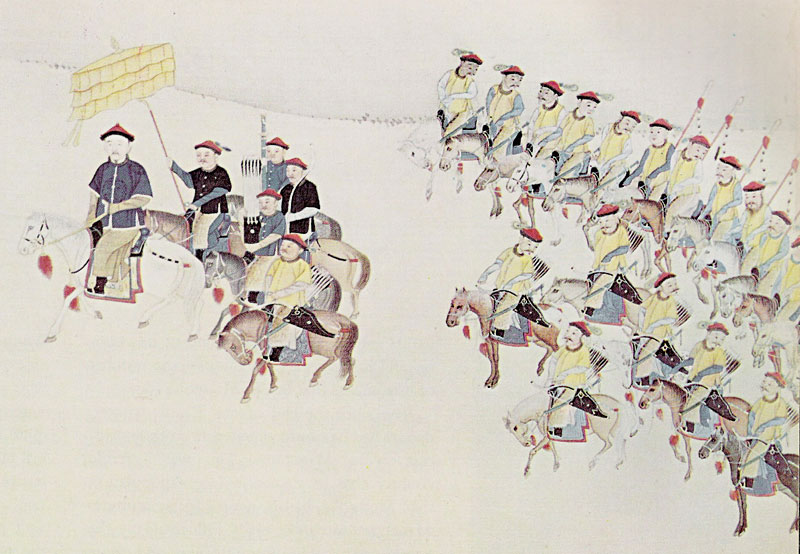
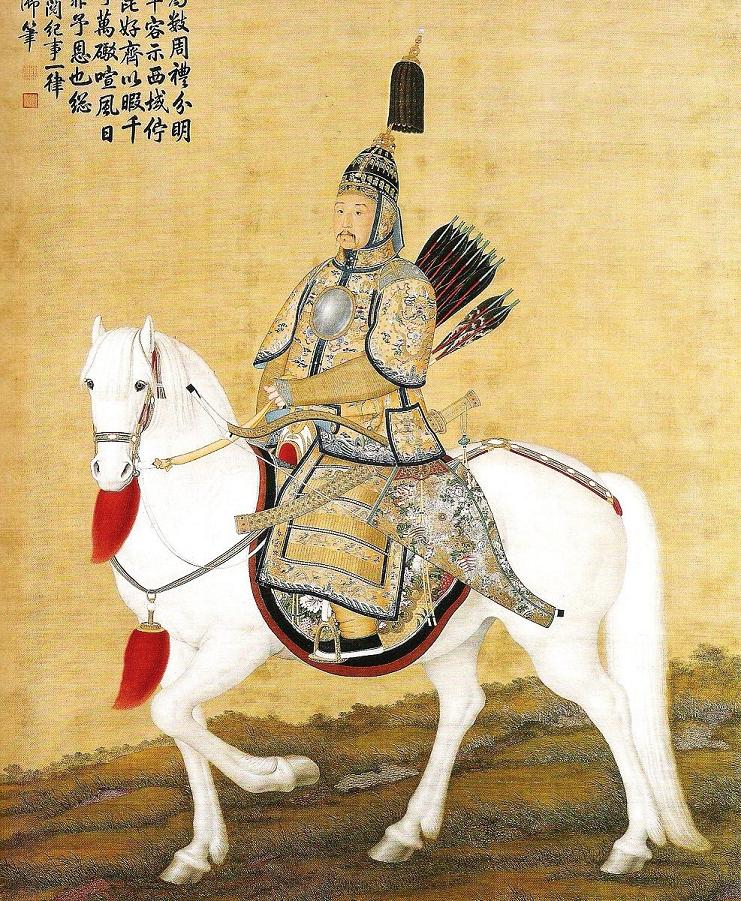
The Kangxi Emperor in ceremonial armor, armed with bow and arrows, and surrounded by bodyguards.
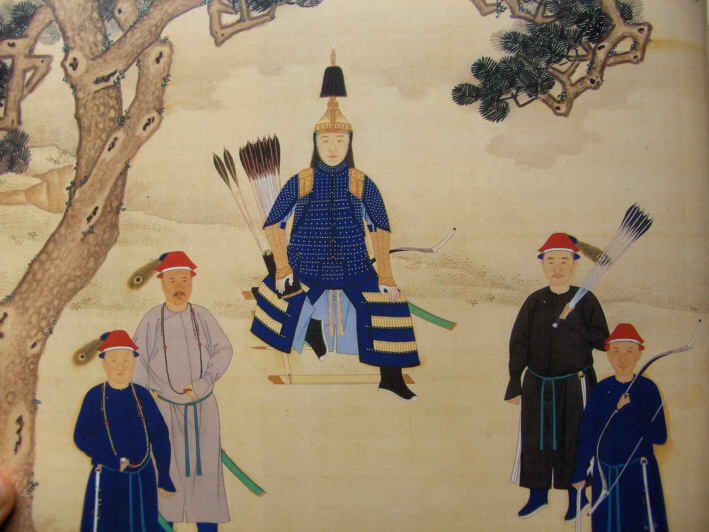
4.3.2. Sino-Russian border conflicts
In the 1650s, the Qing Empire engaged the Tsardom of Russia in a series of Sino-Russian border conflicts along the Amur River region. These conflicts culminated in the Qing gaining control of the area after the Siege of Albazin. The Russians again encroached upon the northern frontier in the 1680s. A series of battles and negotiations followed, leading to the signing of the Treaty of Nerchinsk in 1689. This treaty formally established a defined border between Russia and China.
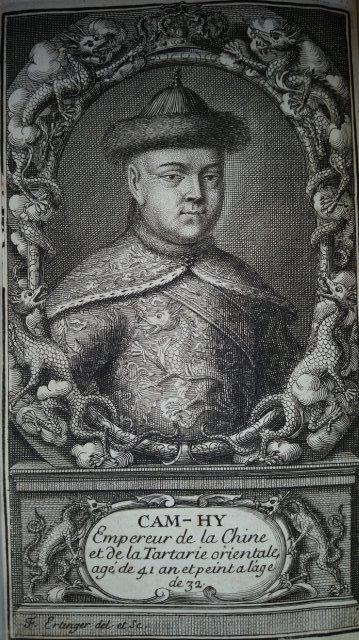
4.3.3. Campaigns against Mongolia
The Kangxi Emperor faced challenges from various Mongol groups. The Inner Mongolian Chahar leader, Ligdan Khan, a descendant of Genghis Khan, resisted the Qing until his death from smallpox in 1634. Subsequently, the Inner Mongols under his son, Ejei Khan, surrendered to the Qing and were granted princely titles. The Inner Mongolian nobility became closely intertwined with the Qing royal family through extensive intermarriage. Ejei Khan died in 1661 and was succeeded by his brother, Abunai. When Abunai displayed disaffection with Manchu Qing rule, he was placed under house arrest in Shenyang in 1669, and the Kangxi Emperor transferred his title to Abunai's son, Borni.
In 1675, Abunai, along with his brother Lubuzung, revolted against the Qing during the Revolt of the Three Feudatories, with approximately 3,000 Chahar Mongol followers joining the rebellion. The Qing swiftly suppressed the revolt within two months, defeating the rebels in battle on 20 April 1675, and killing Abunai and all his followers. Their title was abolished, all Chahar Mongol royal males were executed (even those born to Manchu Qing princesses), and all Chahar Mongol royal females were sold into slavery, with the exception of Manchu Qing princesses. The Chahar Mongols were then placed under the direct control of the Qing Emperor, unlike other Inner Mongol leagues that retained their autonomy.
The Outer Khalkha Mongols had largely maintained their independence, paying only tribute to the Qing Empire. However, a conflict between the houses of Jasagtu Khan and Tösheetü Khan led to a dispute between the Khalkha and the Dzungars over the influence of Tibetan Buddhism. In 1688, the Dzungar chief, Galdan Boshugtu Khan, attacked the Khalkha from the west and invaded their territory. The Khalkha royal families and the first Jebtsundamba Khutuktu crossed the Gobi Desert and sought assistance from the Qing Empire, offering their submission to Qing authority in return. In 1690, Dzungar and Qing forces clashed at the Battle of Ulan Butung in Inner Mongolia, where the Qing ultimately emerged victorious.
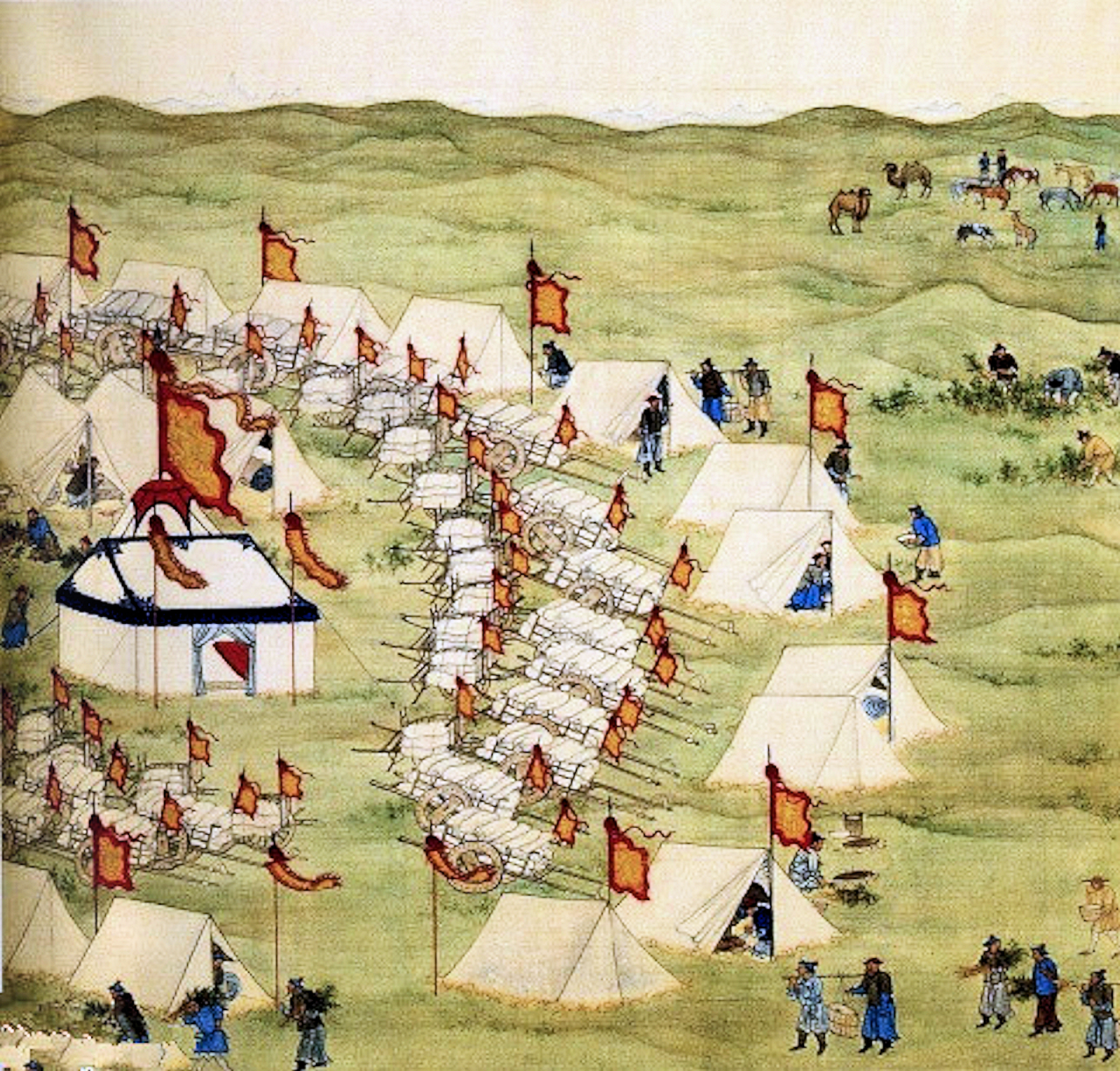
In 1696 and 1697, the Kangxi Emperor personally led campaigns against the Dzungars in the early Dzungar-Qing War. The western contingent of the Qing army defeated Galdan's forces at the Battle of Jao Modo, and Galdan died the following year.
4.3.4. Tibetan policy
In 1701, the Kangxi Emperor ordered the reconquest of Kangding and other border towns in western Sichuan that had been seized by the Tibetans. Manchu forces successfully stormed Dartsedo (now Kangding) and secured the border with Tibet, along with the lucrative tea-horse trade.
The Tibetan desi (regent) Sangye Gyatso had concealed the death of the 5th Dalai Lama in 1682, only informing the emperor in 1697. Furthermore, he maintained relations with Dzungar enemies of the Qing, which greatly displeased the Kangxi Emperor. Eventually, Sangye Gyatso was overthrown and killed by the Khoshut ruler Lha-bzang Khan in 1705. As a reward for eliminating his old enemy, the Kangxi Emperor appointed Lha-bzang Khan as Regent of Tibet (翊法恭順汗Yìfǎ Gōngshùn HánChinese, meaning "Buddhism Respecting, Deferential Khan"). The Dzungar Khanate, a confederation of Oirat tribes based in parts of what is now Xinjiang, continued to threaten the Qing Empire and invaded Tibet in 1717. They captured Lhasa with an army of 6,000 and killed Lha-bzang Khan. The Dzungars held the city for three years and defeated a Qing army sent to the region at the Battle of the Salween River in 1718. The Qing did not regain control of Lhasa until 1720, when the Kangxi Emperor dispatched a larger expeditionary force to defeat the Dzungars.
4.3.5. Other military activities
In 1700, approximately 20,000 Xibe from Qiqihar were resettled in Guisui, in modern Inner Mongolia, and 36,000 Songyuan Xibe were resettled in Shenyang, Liaoning. This relocation is believed to be connected to the Qing's annihilation of the Manchu clan Hoifan (Hoifa) in 1697 and the Manchu tribe Ula in 1703, both of which were wiped out after rebelling against the Qing.
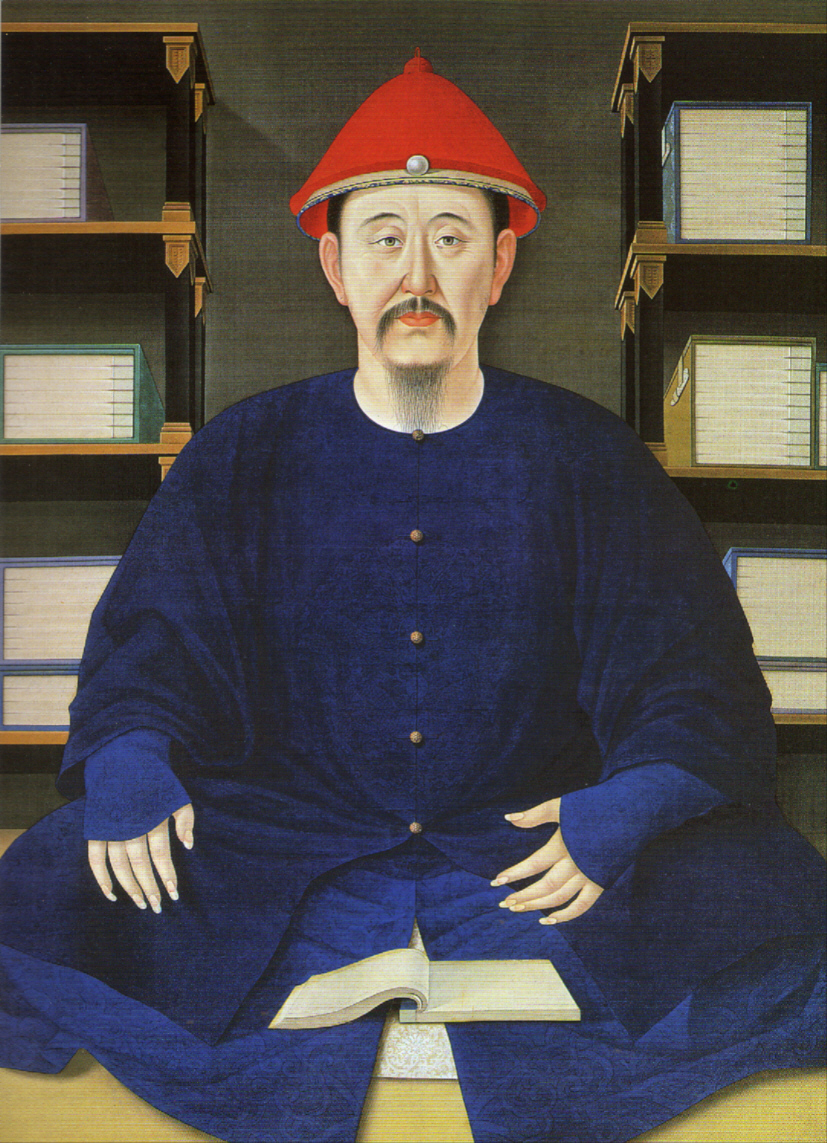
The Kangxi Emperor also employed strategic tactics concerning Muslim populations. He incited anti-Muslim sentiment among the Mongols of Qinghai (Kokonor) to gain support against the Dzungar Oirat Mongol leader Galdan. Kangxi falsely claimed that Chinese Muslims within China, such as Turkic Muslims in Qinghai, were conspiring with Galdan, whom he falsely asserted had converted to Islam. Kangxi further fabricated claims that Galdan had abandoned Buddhism and the Dalai Lama, and was plotting to install a Muslim ruler in China after an invasion, in conspiracy with Chinese Muslims. Kangxi also harbored distrust towards Muslims from Turfan and Hami.
The Kangxi Emperor also granted the title of Wujing Boshi (五經博士Wǔjīng BóshìChinese) to the descendants of prominent Chinese figures such as Shao Yong, Zhu Xi, Zhuansun Shi, the Ran family (Ran Qiu, Ran Geng, Ran Yong), Bu Shang, Yan Yan (disciple of Confucius), and the offspring of the Duke of Zhou.
4.4. Economic policies and achievements
The Kangxi Emperor's economic management and fiscal policies had a significant impact on the empire's prosperity, though challenges emerged in his later years.
4.4.1. Fiscal policy and treasury
The national treasury experienced fluctuations during the Kangxi Emperor's reign. In 1668, the 7th year of his reign, the treasury held 14.93 million taels. By 1692, this figure had risen to 27.385631 million taels. From 1702 to 1709, the treasury maintained approximately 50 million taels with little variation. However, a declining trend began in his later years, with 45.88 million taels in 1710, 44.319033 million taels in 1718, 39.317103 million taels in 1720, and 32.622421 million taels in 1721, the second-to-last year of his reign.
The primary reasons for this decline were the substantial expenditures on military campaigns and an increase in corruption. To address these issues, the Kangxi Emperor provided advice to Prince Yong, who would later become the Yongzheng Emperor, on how to enhance the efficiency of the economy. As a result of the reduction in hostilities following the Manchu conquest and the subsequent rapid increase in population, land cultivation, and agricultural tax revenues, the Kangxi Emperor was able to implement tax remissions. In 1712, he took the significant step of freezing the land tax and corvée altogether, without immediately straining the state treasury. However, this fiscal policy ultimately posed challenges for the dynasty, as it preserved tax rates in perpetuity, hindering later emperors from adjusting the fiscal system and impeding attempts at modernization.
4.4.2. Agricultural and commercial development
The Kangxi Emperor implemented initiatives to promote agriculture and trade, contributing to economic recovery and development after periods of conflict. His policies aimed to stabilize the empire and foster prosperity.
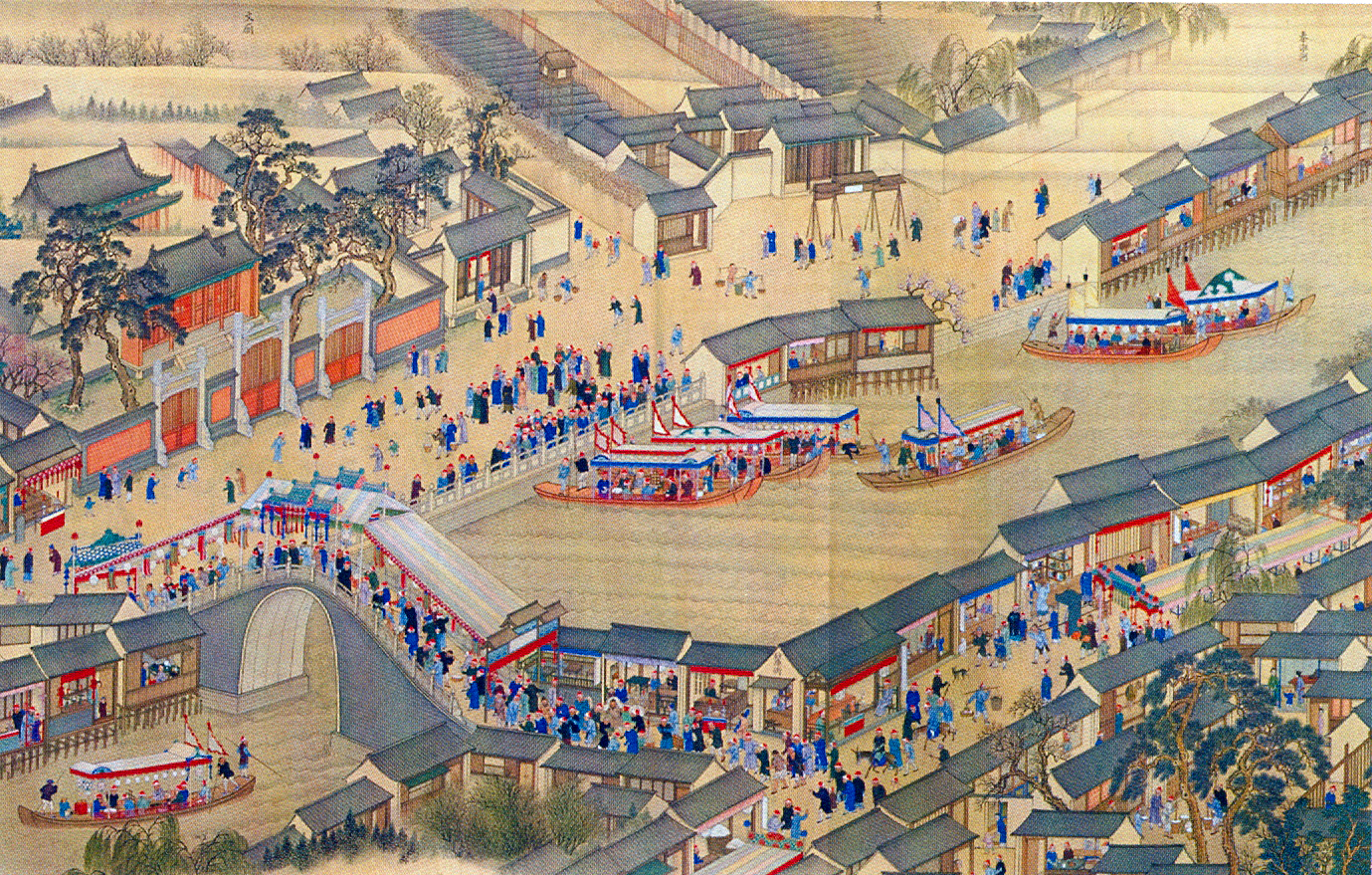
4.5. Cultural and academic promotion
The Kangxi Emperor was a significant patron of scholarship, literature, and the arts, fostering a cultural renaissance that left a lasting legacy.
4.5.1. Compilation of major works
During his reign, the Kangxi Emperor commissioned the compilation of a comprehensive dictionary of Chinese characters, which became famously known as the Kangxi Dictionary. This initiative was partly seen as an effort to gain support from Han Chinese scholar-bureaucrats, many of whom initially refused to serve the Qing dynasty out of loyalty to the fallen Ming. By inviting scholars to work on the dictionary without requiring them to formally serve the imperial court, the Kangxi Emperor gradually drew them into greater responsibilities, eventually leading them to assume duties as state officials.
In 1700, under the Kangxi Emperor's directive, the compilation of a vast encyclopedia known as the Complete Classics Collection of Ancient China was initiated. Although completed during the reign of his successor, the Yongzheng Emperor, it was a monumental project of his era. Additionally, a comprehensive compilation of Tang poetry, the Complete Tang Poems, was also commissioned during his rule.
4.5.2. Introduction of Western science and technology
The Kangxi Emperor demonstrated a keen interest in Western technology and actively sought to introduce it to China. This was facilitated through Jesuit missionaries, such as Ferdinand Verbiest, whom the emperor frequently summoned for discussions. Another notable Jesuit, Karel Slavíček, created the first precise map of Beijing under the emperor's direct order.
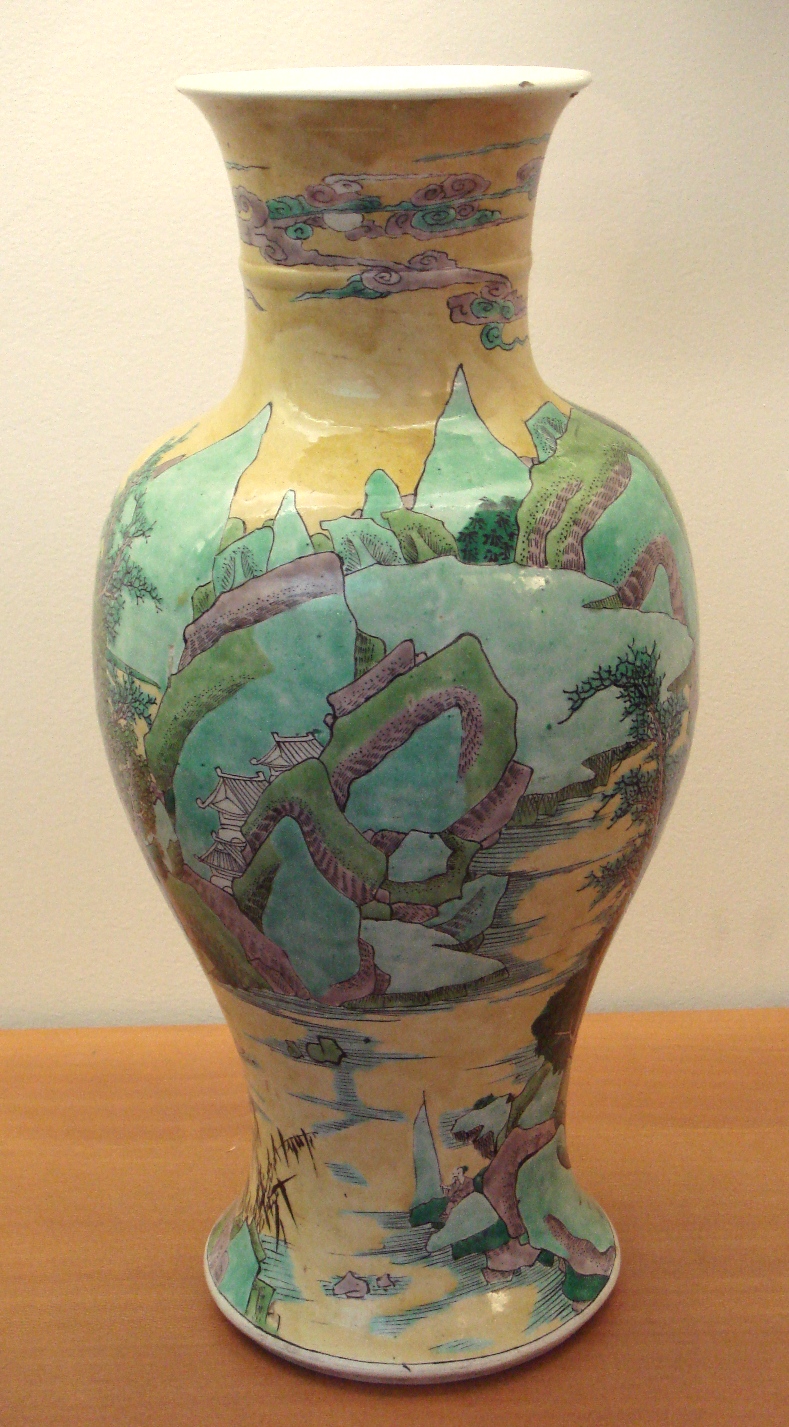
From 1711 to 1723, Matteo Ripa, an Italian priest, served as a painter and copper-engraver at the Qing court. In 1723, Ripa returned to Naples with four young Chinese Christians, with the intention of training them as priests and sending them back to China as missionaries. This endeavor marked the establishment of the Collegio dei Cinesi, sanctioned by Pope Clement XII, which aimed to support the evangelization of Christianity in China. This Chinese Institute became the first school of Sinology in Europe, later evolving into the Istituto Orientale and the present-day Naples Eastern University.
The Kangxi Emperor was also the first Chinese emperor known to play a Western musical instrument. Thomas Pereira taught him to play the harpsichord, and he employed Karel Slavíček as a court musician, who played the spinet, an instrument the emperor himself would later play. China's renowned blue and white porcelain is widely considered to have reached its artistic zenith during the Kangxi Emperor's reign.
4.6. Religious policies and the Chinese Rites controversy
The Kangxi Emperor's approach to Christianity in China evolved from initial tolerance to eventual prohibition, largely due to the contentious Chinese Rites controversy.
4.6.1. Jesuit missions and imperial patronage
In the early decades of the Kangxi Emperor's reign, Jesuit missionaries played a significant role in the imperial court. Their expertise in astronomy allowed them to manage the imperial observatory. Jean-François Gerbillon and Thomas Pereira served as crucial translators during the negotiations for the Treaty of Nerchinsk. The Kangxi Emperor valued the Jesuits for their contributions, their linguistic abilities, and their innovations in gun manufacturing and artillery, the latter of which was instrumental in the Qing Empire's conquest of the Kingdom of Tungning.
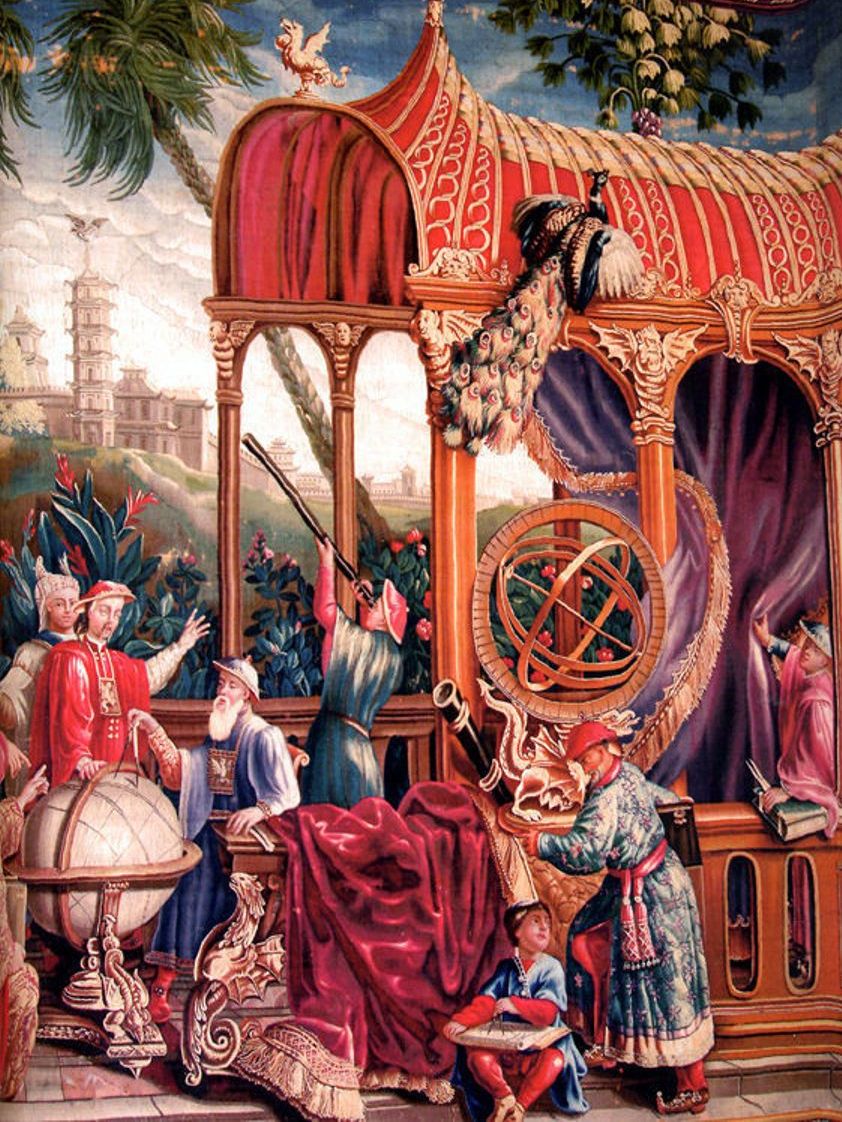
The Kangxi Emperor also appreciated the Jesuits' respectful and unobtrusive demeanor; they spoke the Chinese language proficiently and adopted the silk robes of the elite. In 1692, when Pereira requested official tolerance for Christianity, the Kangxi Emperor readily agreed, issuing the Edict of Toleration. This edict formally recognized Catholicism, prohibited attacks on Christian churches, and legalized their missions and the practice of Christianity by the Chinese people.
4.6.2. The Chinese Rites controversy
Despite initial imperial patronage, a major controversy arose regarding whether Chinese Christians could continue to participate in traditional Confucian ceremonies and ancestor worship. The Jesuits generally advocated for tolerance, arguing that these practices were civil rather than religious, while the Dominicans took a strict stance against them, viewing them as foreign "idolatry" incompatible with Catholic doctrine.
The Dominican position gained the support of Pope Clement XI, who, in 1705, dispatched Charles-Thomas Maillard de Tournon as his representative to the Kangxi Emperor to communicate the papal ban on Chinese rites. Through de Tournon, the Pope insisted on sending his own representative to Beijing to oversee Jesuit missionaries in China. Kangxi, however, refused, desiring to maintain ultimate oversight of missionary activities within China, managed by one of the Jesuits who had resided in Beijing for many years. On 19 March 1715, Pope Clement XI issued the papal bull Ex illa die, which officially condemned Chinese rites. In response, the Kangxi Emperor formally forbade Christian missions in China, stating that they were "causing trouble."
4.7. Governing system and administration
During the Kangxi era, administrative reforms and institutional developments significantly strengthened imperial control and integrated different elements of Chinese society.
4.7.1. Palace Memorial System
The Kangxi Emperor devised a system of communication that bypassed the traditional scholar-bureaucrats, who often held considerable influence and could potentially usurp imperial power. This Palace Memorial System involved the confidential transfer of secret messages between the emperor and trusted officials in the provinces. These messages were contained in locked boxes, accessible only to the emperor and the designated official. Initially, this system was established to receive uncensored reports on extreme weather, which the emperor regarded as divine commentary on his rule. However, it quickly evolved into a general-purpose secret "news channel." This system eventually led to the emergence of a Grand Council, which handled extraordinary matters, particularly military affairs. The council was chaired by the emperor and staffed by his most elevated Han Chinese and Manchu household personnel. The regular mandarin civil servants were excluded from this council, being left solely with routine administration.
4.7.2. Confucianism and civil service
The Kangxi Emperor successfully encouraged the Confucian intelligentsia to cooperate with the Qing government, despite their initial reservations about Manchu rule and their loyalty to the preceding Ming dynasty. He appealed to their sense of Confucian values, notably by issuing the Sacred Edict in 1670, which promoted moral and ethical principles. He actively encouraged Confucian learning and ensured that the civil service examinations were held every three years, even during periods of stress. When some scholars, out of loyalty to the Ming, refused to take the regular exams, he introduced a special examination by nomination.
He personally sponsored the compilation of significant literary works, including the History of Ming (the official history of the Ming dynasty), the Kangxi Dictionary, a phrase-dictionary, a vast encyclopedia, and an even more extensive compilation of Chinese literature. To cultivate his image as a "sage ruler," he appointed Manchu and Chinese tutors with whom he diligently studied the Confucian classics and practiced Chinese calligraphy.
5. Succession disputes
The Kangxi Emperor's later reign was marked by complex and prolonged struggles among his numerous sons for the imperial throne, a period known as the "Nine Lords' War" (九子奪嫡Chinese (Chinese characters)).
5.1. Deposition and restoration of the Crown Prince
In 1674, the Kangxi Emperor's first empress, Empress Xiaochengren, died while giving birth to his second surviving son, Yinreng. At the age of two, Yinreng was named crown prince, a practice influenced by Han Chinese custom, intended to ensure stability during a chaotic period in the south. Although the Kangxi Emperor entrusted the education of several of his sons to others, he personally oversaw Yinreng's upbringing, meticulously grooming him to be a flawless successor. Yinreng was tutored by the mandarin Wang Shan, who remained devoted to him and spent his later years attempting to persuade the Kangxi Emperor to reinstate Yinreng as crown prince.
Despite his father's favoritism, Yinreng proved to be an unsuitable heir. He was known to have beaten and killed his subordinates and was alleged to have engaged in sexual relations with one of his father's concubines, an act considered incest and a capital offense. Yinreng also reportedly purchased young children from Jiangsu to satisfy his pedophiliac desires. Furthermore, Yinreng's supporters, led by Songgotu, gradually formed a powerful "Crown Prince Party" (太子黨), which sought to expedite Yinreng's ascension to the throne, even resorting to unlawful methods.
Over the years, the Kangxi Emperor closely monitored Yinreng's behavior and became increasingly aware of his son's many flaws, leading to a deterioration in their relationship. In 1707, the emperor decided he could no longer tolerate Yinreng's conduct, which he described in an imperial edict as "never obeying ancestors' virtues, never obliged to my order, only doing inhumanity and devilry, only showing maliciousness and lust." He consequently stripped Yinreng of his position as crown prince. The Kangxi Emperor then placed his oldest surviving son, Yinzhi, in charge of overseeing Yinreng's house arrest. Yinzhi, an unfavored Shu son (son by a concubine), knowing he had no chance of being selected as heir, recommended the eighth prince, Yinsi, and requested his father to order Yinreng's execution. The Kangxi Emperor was enraged by this suggestion and stripped Yinzhi of his titles. The emperor then commanded his subjects to cease debating the succession issue, but despite this and attempts to quell rumors and speculation about the new crown prince, daily imperial court activities were disrupted. Yinzhi's actions led the Kangxi Emperor to suspect that Yinreng might have been framed, prompting him to restore Yinreng as crown prince in 1709, with the support of the fourth and thirteenth princes, and on the pretext that Yinreng had previously acted under the influence of mental illness.
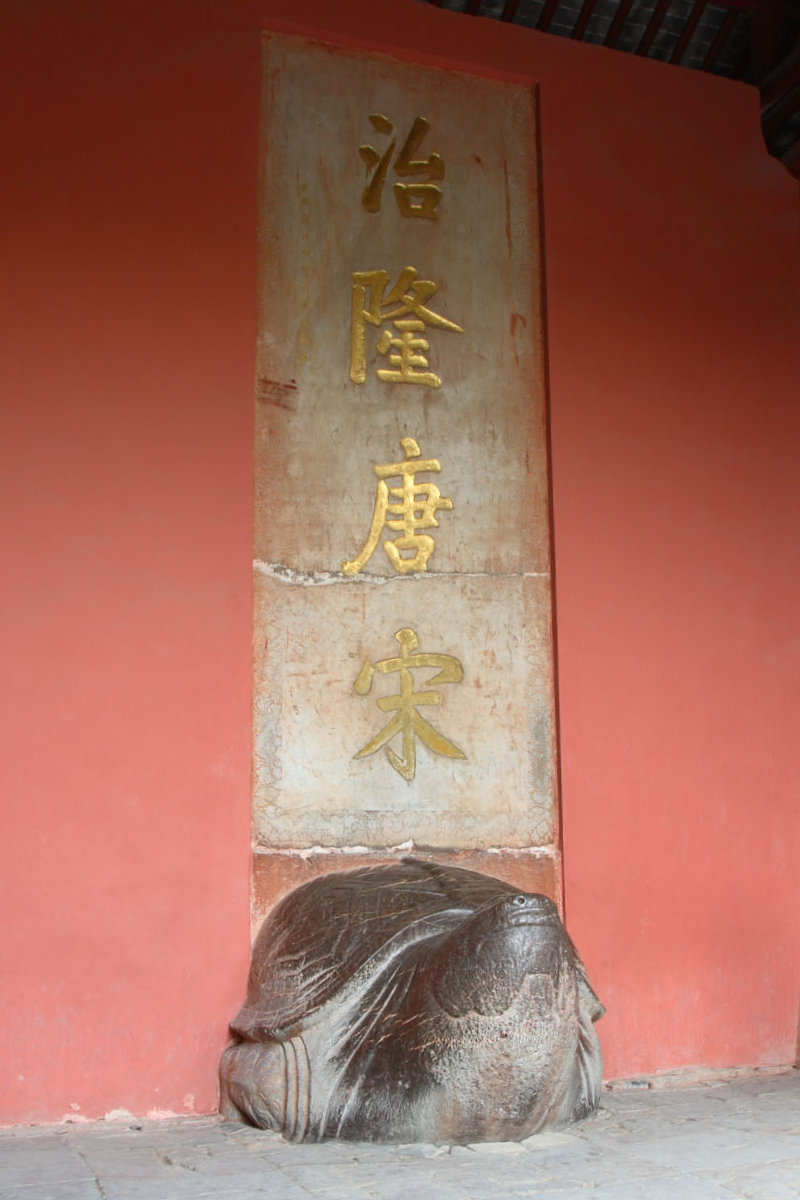
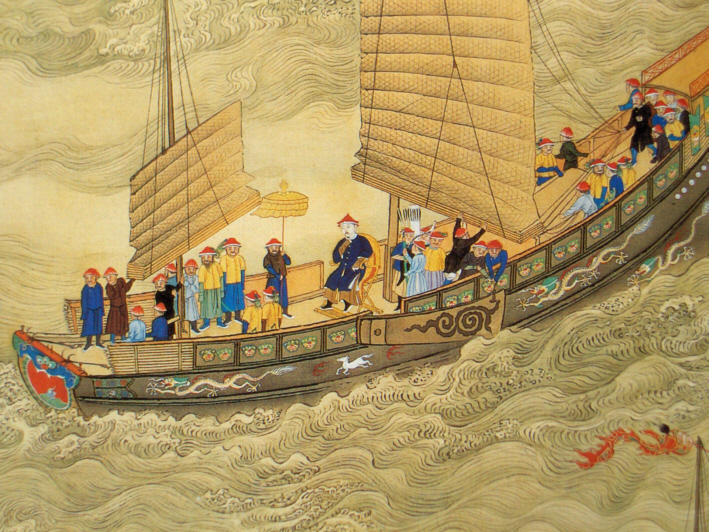
5.2. The "Nine Lords' War"
In 1712, during the Kangxi Emperor's final inspection tour of the south, Yinreng, who was again in charge of state affairs during his father's absence, attempted to regain power with the help of his supporters. He even allowed an attempt to force the Kangxi Emperor to abdicate upon his return to Beijing. However, the emperor received intelligence of the planned coup d'etat and was so incensed that he deposed Yinreng once more, placing him under house arrest. After this incident, the emperor publicly announced that he would not appoint any of his sons as crown prince for the remainder of his reign. He stated that his Imperial Valedictory Will would be sealed in a box within the Palace of Heavenly Purity, to be opened only after his death.
With Yinreng completely disavowed, the succession struggle intensified. Yinsi, the eighth prince, along with some other princes, began to support the fourteenth prince, Yinti. Meanwhile, the thirteenth prince, Yinxiang, supported the fourth prince, Yinzhen. These factions formed the so-called "Eighth Lord Party" (八爺黨Chinese (Chinese characters)) and "Fourth Lord Party" (四爺黨Chinese (Chinese characters)), respectively, leading to intense competition and political maneuvering among multiple princes vying for succession.
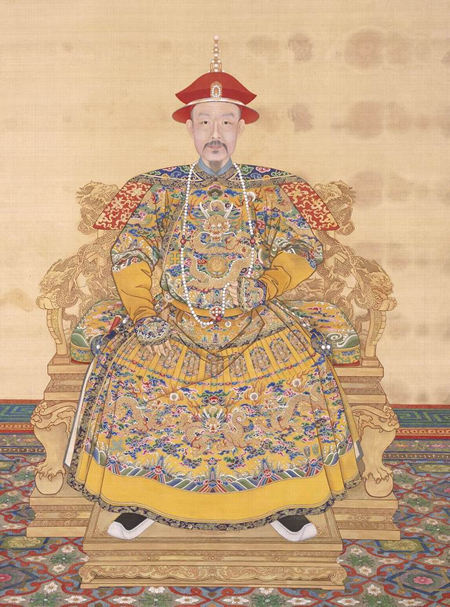
6. Personal life and family
The Kangxi Emperor had a large family, including numerous empresses, consorts, and children, reflecting the imperial customs of the time.
6.1. Empresses and consorts
The Kangxi Emperor had four empresses and numerous imperial consorts.
- Empress Xiaochengren (孝誠仁皇后) of the Hešeri clan (赫舍里氏; 3 May 1654 - 6 June 1674)
- Chenghu (承祜; 4 January 1670 - 3 March 1672), second son
- Yunreng (允礽), Prince Limi of the First Rank (理密親王; 6 June 1674 - 27 January 1725), seventh (second) son
- Empress Xiaozhaoren (孝昭仁皇后) of the Niohuru clan (鈕祜祿氏; 1653 - 18 March 1678), the Kangxi Emperor's second cousin and elder sister of Noble Consort Wenxi.
- Empress Xiaoyiren (孝懿仁皇后) of the Tunggiya clan (佟佳氏; ? - 24 August 1689), the Kangxi Emperor's first cousin and elder sister of Imperial Noble Consort Quehui.
- Eighth daughter (13 July 1683 - 6 August 1683)
- Miscarriage (August 1689)
- Empress Xiaogongren (孝恭仁皇后) of the Uya clan (烏雅氏; 28 April 1660 - 25 June 1723)
- Yinzhen (胤禛), the Yongzheng Emperor (雍正帝; 13 December 1678 - 8 October 1735), 11th (fourth) son
- Yinzuo (胤祚; 5 March 1680 - 15 June 1685), 14th (sixth) son
- Seventh daughter (5 July 1682 - September 1682)
- Princess Wenxian of the First Rank (固倫溫憲公主; 10 November 1683 - August/September 1702), ninth daughter
- Married Shun'anyan (舜安顏; ? - 1724) of the Manchu Tunggiya clan in October/November 1700
- 12th daughter (14 June 1686 - February/March 1697)
- Yunti (允禵), Prince Xunqin of the Second Rank (恂勤郡王; 10 February 1688 - 16 February 1755), 23rd (14th) son
- Imperial Noble Consort Quehui (愨惠皇貴妃) of the Tunggiya clan (佟佳氏; September/October 1668 - 24 April 1743), the Kangxi Emperor's first cousin and younger sister of Empress Xiaoyiren.
- Imperial Noble Consort Jingmin (敬敏皇貴妃) of the Janggiya clan (章佳氏; ? - 20 August 1699)
- Yinxiang (胤祥), Prince Yixian of the First Rank (怡賢親王; 16 November 1686 - 18 June 1730), 22nd (13th) son
- Princess Wenke of the Second Rank (和碩溫恪公主; 31 December 1687 - 27 July 1709), 13th daughter
- Married Cangjin (蒼津) of the Mongol Onnigud Borjigin clan in August/September 1706
- Princess Dunke of the Second Rank (和碩敦恪公主; 3 February 1691 - 2 January 1710), 15th daughter
- Married Dorji (多爾濟; ? - 1720) of the Mongol Khorchin Borjigin clan in January/February 1709 and had issue (one daughter)
- Imperial Noble Consort Dunyi (惇怡皇貴妃) of the Gūwalgiya clan (瓜爾佳氏; 3 December 1683 - 30 April 1768)
- 18th daughter (17 November 1701 - November 1701)
- Noble Consort Wenxi (溫僖貴妃) of the Niohuru clan (鈕祜祿氏; 14 February 1661 - 19 December 1694), the Kangxi Emperor's second cousin and younger sister of Empress Xiaozhaoren.
- Yun'e (允䄉), Duke of the Second Rank (輔國公; 28 November 1683 - 18 October 1741), 18th (10th) son
- 11th daughter (24 October 1685 - June/July 1686)
- Consort Hui (慧妃) of the Khorchin Borjigin clan (博爾濟吉特氏; ? - 30 May 1670), the Kangxi Emperor's first cousin-twice-removed.
- Consort Hui (惠妃) of the Ula-Nara clan (葉赫那拉氏; ? - 1 May 1732)
- Chengqing (承慶; 21 March 1670 - 26 May 1671), third son
- Yunzhi (允禔), Prince of the Fourth Rank (貝子; 12 March 1672 - 7 January 1735), fifth (first) son
- Consort Yi (宜妃) of the Gorolo clan (郭絡羅氏; 1660 - 2 October 1733), personal name Nalanzhu (納蘭珠)
- Yunki (允祺), Prince Hengwen of the First Rank (恆溫親王; 5 January 1680 - 10 July 1732), 13th (fifth) son
- Yuntang (允禟), Prince of the Fourth Rank (貝子; 17 October 1683 - 22 September 1726), 17th (ninth) son
- Yinzi (胤禌; 8 June 1685 - 22 August 1696), 20th (11th) son
- Consort Rong (榮妃) of the Magiya clan (馬佳氏; ? - 26 April 1727)
- Chengrui (承瑞; 5 November 1667 - 10 July 1670), first son
- Saiyinchahun (賽音察渾; 24 January 1672 - 6 March 1674), fourth son
- Princess Rongxian of the First Rank (固倫榮憲公主; 20 June 1673 - 29 May 1728), third daughter
- Married Örgen (烏爾袞; ? - 1721) of the Mongol Barin Borjigin clan in June/July 1691 and had issue (a son)
- Changhua (長華; 11 May 1674 - ?), sixth son
- Changsheng (長生; 10 September 1675 - 27 April 1677), eighth son
- Yunzhi (允祉), Prince Chengyin of the Second Rank (誠隱郡王; 23 March 1677 - 10 July 1732), 10th (third) son
- Consort Ping (平妃) of the Hešeri clan (赫舍里氏; ? - 18 July 1696)
- Yinji (胤禨; 23 February 1691 - 30 March 1691), 24th son
- Consort Liang (良妃) of the Wei clan (衛氏; 1662 - 29 December 1711)
- Yunsi (允禩), Prince Lian of the First Rank (廉親王; 29 March 1681 - 5 October 1726), 16th (eighth) son
- Consort Xuan (宣妃) of the Khorchin Borjigin clan (博爾濟吉特氏; ? - 12 September 1736), personal name Chenglian (成蓮), the Kangxi Emperor's third cousin.
- Consort Cheng (成妃) of the Daigiya clan (戴佳氏; ? - 18 December 1740)
- Yunyou (允佑), Prince Chundu of the First Rank (淳度親王; 19 August 1680 - 18 May 1730), 15th (seventh) son
- Consort Shunyimi (順懿密妃) of the Wang clan (王氏; ? - 19 November 1744)
- Yunxu (允禑), Prince Yuke of the Second Rank (愉恪郡王; 24 December 1693 - 8 March 1731), 25th (15th) son
- Yunlu (允祿), Prince Zhuangke of the First Rank (莊恪親王; 28 July 1695 - 20 March 1767), 26th (16th) son
- Yinxie (胤祄; 15 May 1701 - 17 October 1708), 28th (18th) son
- Consort Chunyuqin (純裕勤妃) of the Chen clan (陳氏; ? - 12 January 1754)
- Yunli (允禮), Prince Guoyi of the First Rank (果毅親王; 24 March 1697 - 21 March 1738), 27th (17th) son
- Consort Ding (定妃) of the Wanlioha clan (萬琉哈氏; January/February 1661 - 24 May 1757)
- Yuntao (允祹), Prince Lüyi of the First Rank (履懿親王; 18 January 1686 - 1 September 1763), 21st (12th) son
6.2. Children
The Kangxi Emperor had numerous sons and daughters. The following lists include those mentioned in the source, along with their mothers where specified.
- Sons
- Chengrui (承瑞; 5 November 1667 - 10 July 1670), first son, by Consort Rong.
- Chenghu (承祜; 4 January 1670 - 3 March 1672), second son, by Empress Xiaochengren.
- Chengqing (承慶; 21 March 1670 - 26 May 1671), third son, by Consort Hui (Ula-Nara clan).
- Saiyinchahun (賽音察渾; 24 January 1672 - 6 March 1674), fourth son, by Consort Rong.
- Yunzhi (允禔), Prince of the Fourth Rank (貝子; 12 March 1672 - 7 January 1735), fifth (first) son, by Consort Hui (Ula-Nara clan).
- Changhua (長華; 11 May 1674 - ?), sixth son, by Consort Rong.
- Yunreng (允礽), Prince Limi of the First Rank (理密親王; 6 June 1674 - 27 January 1725), seventh (second) son, by Empress Xiaochengren.
- Changsheng (長生; 10 September 1675 - 27 April 1677), eighth son, by Consort Rong.
- Wanfu (萬黼; 4 December 1675 - 11 March 1679), ninth son, by Noble Lady (Nara clan).
- Yunzhi (允祉), Prince Chengyin of the Second Rank (誠隱郡王; 23 March 1677 - 10 July 1732), 10th (third) son, by Consort Rong.
- Yinzhen (胤禛), the Yongzheng Emperor (雍正帝; 13 December 1678 - 8 October 1735), 11th (fourth) son, by Empress Xiaogongren.
- Yinzan (胤禶; 10 April 1679 - 30 April 1680), 12th son, by Noble Lady (Nara clan).
- Yunki (允祺), Prince Hengwen of the First Rank (恆溫親王; 5 January 1680 - 10 July 1732), 13th (fifth) son, by Consort Yi.
- Yinzuo (胤祚; 5 March 1680 - 15 June 1685), 14th (sixth) son, by Empress Xiaogongren.
- Yunyou (允佑), Prince Chundu of the First Rank (淳度親王; 19 August 1680 - 18 May 1730), 15th (seventh) son, by Consort Cheng.
- Yunsi (允禩), Prince Lian of the First Rank (廉親王; 29 March 1681 - 5 October 1726), 16th (eighth) son, by Consort Liang.
- Yuntang (允禟), Prince of the Fourth Rank (貝子; 17 October 1683 - 22 September 1726), 17th (ninth) son, by Consort Yi.
- Yun'e (允䄉), Duke of the Second Rank (輔國公; 28 November 1683 - 18 October 1741), 18th (10th) son, by Noble Consort Wenxi.
- Yinju (胤䄔; 13 September 1683 - 17 July 1684), 19th son, by Noble Lady (Gorolo clan).
- Yinzi (胤禌; 8 June 1685 - 22 August 1696), 20th (11th) son, by Consort Yi.
- Yuntao (允祹), Prince Lüyi of the First Rank (履懿親王; 18 January 1686 - 1 September 1763), 21st (12th) son, by Consort Ding.
- Yinxiang (胤祥), Prince Yixian of the First Rank (怡賢親王; 16 November 1686 - 18 June 1730), 22nd (13th) son, by Imperial Noble Consort Jingmin.
- Yunti (允禵), Prince Xunqin of the Second Rank (恂勤郡王; 10 February 1688 - 16 February 1755), 23rd (14th) son, by Empress Xiaogongren.
- Yinji (胤禨; 23 February 1691 - 30 March 1691), 24th son, by Consort Ping.
- Yunxu (允禑), Prince Yuke of the Second Rank (愉恪郡王; 24 December 1693 - 8 March 1731), 25th (15th) son, by Consort Shunyimi.
- Yunlu (允祿), Prince Zhuangke of the First Rank (莊恪親王; 28 July 1695 - 20 March 1767), 26th (16th) son, by Consort Shunyimi.
- Yunli (允禮), Prince Guoyi of the First Rank (果毅親王; 24 March 1697 - 21 March 1738), 27th (17th) son, by Consort Chunyuqin.
- Yinxie (胤祄; 15 May 1701 - 17 October 1708), 28th (18th) son, by Consort Shunyimi.
- Yinji (胤禝; 25 October 1702 - 28 March 1704), 29th (19th) son, by Concubine Xiang.
- Yunyi (允禕), Prince Jianjing of the Third Rank (簡靖貝勒; 1 September 1706 - 30 June 1755), 30th (20th) son, by Concubine Xiang.
- Yunxi (允禧), Prince Shenjing of the Second Rank (慎靖郡王; 27 February 1711 - 26 June 1758), 31st (21st) son, by Concubine Xi.
- Yunhu (允祜), Prince Gongqin of the Third Rank (恭勤貝勒; 10 January 1712 - 12 February 1744), 32nd (22nd) son, by Concubine Jin.
- Yunci (允祁), Prince Cheng of the Third Rank (誠貝勒; 14 January 1714 - 31 August 1785), 33rd (23rd) son, by Concubine Jing.
- Yunbi (允秘), Prince Xianke of the First Rank (𫍯恪親王; 5 July 1716 - 3 December 1773), 34th (24th) son, by Concubine Mu.
- Yinyuan (胤禐; 2 March 1718), 35th son, by Concubine Mu.
- Daughters
- First daughter (23 December 1668 - November 1671), by Mistress (Zhang clan).
- Second daughter (17 April 1671 - March/April 1673), by Concubine Duan.
- Princess Rongxian of the First Rank (固倫榮憲公主; 20 June 1673 - 29 May 1728), third daughter, by Consort Rong.
- Fourth daughter (16 March 1674 - January/February 1679), by Mistress (Zhang clan).
- Princess Duanjing of the Second Rank (和碩端靜公主; 9 June 1674 - March/April 1710), fifth daughter, by Noble Lady Bu.
- Princess Kejing of the First Rank (固倫恪靖公主; 4 July 1679 - March/April 1735), sixth daughter, by Noble Lady (Gorolo clan).
- Seventh daughter (5 July 1682 - September 1682), by Empress Xiaogongren.
- Eighth daughter (13 July 1683 - 6 August 1683), by Empress Xiaoyiren.
- Princess Wenxian of the First Rank (固倫溫憲公主; 10 November 1683 - August/September 1702), ninth daughter, by Empress Xiaogongren.
- Princess Chunque of the First Rank (固倫純慤公主; 20 March 1685 - 22 April 1710), 10th daughter, by Concubine Tong.
- 11th daughter (24 October 1685 - June/July 1686), by Noble Consort Wenxi.
- 12th daughter (14 June 1686 - February/March 1697), by Empress Xiaogongren.
- Princess Wenke of the Second Rank (和碩溫恪公主; 31 December 1687 - 27 July 1709), 13th daughter, by Imperial Noble Consort Jingmin.
- Princess Quejing of the Second Rank (和碩愨靖公主; 16 January 1690 - 1736), 14th daughter, by Noble Lady (Yuan clan).
- Princess Dunke of the Second Rank (和碩敦恪公主; 3 February 1691 - 2 January 1710), 15th daughter, by Imperial Noble Consort Jingmin.
- 16th daughter (27 November 1695 - October/November 1707), by Mistress (Wang clan).
- 17th daughter (12 January 1699 - December 1700 or January 1701), by Mistress (Liu clan).
- 18th daughter (17 November 1701 - November 1701), by Imperial Noble Consort Dunyi.
- 19th daughter (30 March 1703 - February/March 1705), by Concubine Xiang.
- 20th daughter (20 November 1708 - January/February 1709), by Mistress (Niohuru clan).
6.3. Ancestry
The Kangxi Emperor's ancestry traces back through the Aisin-Gioro clan, the ruling house of the Qing dynasty.
| Ancestor | Relationship | Notes |
|---|---|---|
| Kangxi Emperor (1654-1722) | 1 | |
| Shunzhi Emperor (1638-1661) | 2 (Father) | |
| Empress Xiaokangzhang (1638-1663) | 3 (Mother) | |
| Hong Taiji (1592-1643) | 4 (Paternal Grandfather) | |
| Empress Xiaozhuangwen (1613-1688) | 5 (Paternal Grandmother) | |
| Tulai (1606-1658) | 6 (Maternal Grandfather) | |
| Lady Gioro | 7 (Maternal Grandmother) | |
| Nurhaci (1559-1626) | 8 (Paternal Great-Grandfather) | |
| Empress Xiaocigao (1575-1603) | 9 (Paternal Great-Grandmother) | |
| Jaisang | 10 (Paternal Great-Grandfather) | |
| Boli (d. 1654) | 11 (Paternal Great-Grandmother) | |
| Yangzhen (d. 1621) | 12 (Maternal Great-Grandfather) |
7. Death and succession
The Kangxi Emperor's death in 1722 brought an end to his long and impactful reign, leading to a carefully managed transfer of power.
7.1. Final illness and death
In the evening of 20 December 1722, just before his death, the Kangxi Emperor summoned seven of his sons to his bedside. These included the third, fourth, eighth, ninth, tenth, sixteenth, and seventeenth princes. The emperor died on this date.

7.2. Selection of successor and accession
Following the Kangxi Emperor's death, Longkodo announced that the emperor had chosen the fourth prince, Yinzhen, as the new emperor. Yinzhen subsequently ascended to the throne and became known as the Yongzheng Emperor. The Kangxi Emperor was entombed at the Eastern Qing Tombs in Zunhua, Hebei.
A popular legend concerning the Kangxi Emperor's will claims that he had chosen the fourteenth prince, Yinti, as his heir, but that Yinzhen forged the will in his own favor. However, this legend has long been refuted by serious historians. Yinzhen, later the Yongzheng Emperor, has been the subject of many rumors, with some fictional accounts even claiming he was assassinated by a swordswoman named Lü Siniang (呂四娘Chinese (Chinese characters)), the granddaughter of Lü Liuliang, though this is not taken seriously by scholars.
8. Evaluation and legacy
The Kangxi Emperor's reign is widely regarded as a period of significant achievement, consolidating the Qing dynasty and laying the groundwork for future prosperity, though it also faced certain limitations and criticisms.
8.1. Achievements and limitations
The Kangxi Emperor was a pivotal figure in the consolidation of the Qing dynasty. The transition from the Ming dynasty to the Qing had been a tumultuous period, marked by the fall of the capital Beijing to peasant rebels led by Li Zicheng, and then to the Manchus in 1644, leading to the enthronement of the five-year-old Shunzhi Emperor. By 1661, when the Shunzhi Emperor died and the Kangxi Emperor succeeded him, the Qing conquest of China proper was nearly complete. Leading Manchus had already begun adopting Chinese institutions and mastering Confucian ideology, while diligently preserving their distinct Manchu culture. The Kangxi Emperor completed the conquest, successfully suppressed all significant military threats, and revitalized the central government system inherited from the Ming, introducing important modifications.
The Kangxi Emperor was known for his exceptional work ethic, rising early and retiring late. He diligently read and responded to numerous memorials daily, conferred with his councilors, and granted audiences. This was his routine during normal times; in periods of war, he would often read memorials from the warfront until after midnight, and even personally led campaigns, such as during the Dzungar conflict. He demonstrated himself to be an effective military commander, showing intimate care for the rank-and-file and a discerning yet masterful relationship with his generals.
As peace returned to China after the Manchu conquest, and with a subsequent rapid increase in population, land cultivation, and agricultural tax revenues, the Kangxi Emperor was able to implement tax remissions. In 1712, he took the significant step of freezing the land tax and corvée altogether, without immediately straining the state treasury. While this policy provided immediate relief, it ultimately posed a limitation for the dynasty, as it preserved tax rates in perpetuity, hindering later emperors from adjusting the fiscal system and impeding attempts at modernization.
8.2. Impact on later history
Kangxi's policies and rule profoundly shaped subsequent Qing emperors and the trajectory of Chinese history. His consolidation of the empire, promotion of cultural endeavors, and administrative innovations provided a stable foundation. The "Prosperous Era of Kangxi and Qianlong," which began under his rule, is considered a high point of the Qing dynasty, characterized by relative peace, economic growth, and cultural flourishing. However, his decision to freeze land taxes, while initially beneficial, created a long-term fiscal rigidity that would later contribute to the dynasty's challenges in adapting to changing economic realities and modernizing its governance.
8.3. Criticisms and controversies
Despite his many achievements, the Kangxi Emperor's reign has faced historical scrutiny and criticism. The long-term impact of his fiscal policy, particularly the freezing of the land tax, is often cited as a significant limitation. While it initially eased the burden on the populace and contributed to stability, it prevented future emperors from adjusting tax rates to meet the evolving financial needs of the state, thereby hindering later attempts at modernization and contributing to eventual dynastic decline. Additionally, his handling of the Chinese Rites controversy led to the eventual prohibition of Christian missions in China, which isolated the empire from certain aspects of Western scientific and cultural exchange that had initially been welcomed.
9. In popular culture
The Kangxi Emperor has been a prominent figure in various forms of popular media, reflecting his enduring cultural significance.
9.1. Fiction
- The Great Kangxi Emperor (康熙大帝Kāngxī DàdìChinese), a historical novel by Eryue He, romanticizes the Kangxi Emperor's life.
- The Deer and the Cauldron, a wuxia novel by Jin Yong. In the novel, the Kangxi Emperor and the protagonist, Wei Xiaobao, become close friends in their childhood. Wei Xiaobao helps the emperor consolidate his rule over the Qing Empire and plays an important role in how significant historical events of the Kangxi era unfold.
- Seven Swords Descend from Mount Heaven, a wuxia novel by Liang Yusheng. In the novel, the Kangxi Emperor discovers that his father, the Shunzhi Emperor, has become a monk in a monastery on Mount Wutai. He orders a close aide to kill his father to consolidate power and later attempts to erase evidence of the murder.
9.2. Film and television
The Kangxi Emperor has been portrayed in numerous film and television productions.
| Year | Region | Title | Type | Kangxi Emperor actor | Notes |
|---|---|---|---|---|---|
| 1984 | Hong Kong | The Deer and the Cauldron | Television | Andy Lau | A Hong Kong television series adapted from The Deer and the Cauldron. |
| 1995 | Hong Kong | The Ching Emperor (天子屠龍) | Television | Julian Cheung | TVB series. |
| 1998 | Hong Kong | The Deer and the Cauldron | Television | Steven Ma | Hong Kong television series adapted from The Deer and the Cauldron. |
| 2000 | Hong Kong/Taiwan | The Duke of Mount Deer (小宝与康熙) | Television | Patrick Tam | Adapted from Louis Cha's novel The Deer and the Cauldron. |
| 2001 | Mainland China | Kangxi Dynasty | Television | Chen Daoming | Adapted from Eryue He's novel The Great Kangxi Emperor. |
| 2006 | Mainland China | Secret History of Kangxi (康熙秘史) | Television | Xia Yu | The fourth installment in a four-part Chinese television series about the early history of the Qing dynasty. |
| 1998-2007 | Mainland China | Records of Kangxi's Travel Incognito | Television | Zhang Guoli | A five-season Chinese television series about the Kangxi Emperor's inspection tours to southern China. During some of his tours, the emperor disguised himself as a commoner to conceal his identity so that he could blend into society and understand commoners' daily lives better. |
| 2008 | Mainland China | The Deer and the Cauldron | Television | Wallace Chung | Chinese television series adapted from The Deer and the Cauldron. |
| 2011 | Mainland China | Palace | Television | Kent Tong | Chinese television series set in the Kangxi era of the Qing dynasty. A woman from the 21st century accidentally travels back in time to the 18th century. |
| 2011 | Hong Kong | The Life and Times of a Sentinel | Television | Power Chan | Hong Kong television series about Fuquan attempting to overthrow the Kangxi Emperor. |
| 2011 | Mainland China | Scarlet Heart | Television | Damian Lau | Chinese television series set in the Kangxi era of the Qing dynasty. A woman from the 21st century accidentally travels back in time to the 18th century. |
| 2013 | Mainland China | The Palace | Film | Winston Chao | |
| 2014 | Mainland China | The Deer and the Cauldron | Television | Wei Qianxiang | Chinese television series adapted from The Deer and the Cauldron. |
| 2014 | Hong Kong | Gilded Chopsticks | Television | Elliot Ngok | Hong Kong television series about a chef who befriends Yinzhen (the future Yongzheng Emperor) and aids him in the power struggle for the succession. |
| 2016 | Mainland China | Chronicle of Life | Television | Hawick Lau | Chinese television series about a romance between the Kangxi Emperor and his childhood love. |
| 2017 | Mainland China | Legend of Dragon Pearl | Television | Qin Junjie | Chinese television series about Kangxi at the beginning of his reign. |
| 2019 | Mainland China | Dreaming Back to the Qing Dynasty | Television | Liu Jun | |
| 2022 | Mainland China | The Long River | Television | Luo Jin | Chinese television series about Kangxi's efforts to recruit talented officials to manage the Yellow River. |
9.3. Video games
- Age of Empires III: The Asian Dynasties: The Kangxi Emperor is featured as the Chinese leader in this real-time strategy game.
- Call Me Emperor: Kangxi is featured as a minister in this Strategy Click-RPG game.